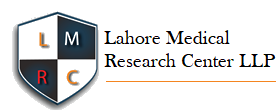Comparative Analysis of Heavy Metal Accumulation Pattern and Genotoxicity in Water Fowl
DOI:
https://doi.org/10.54393/mjz.v2i1.29Abstract
Waterfowl spend their lives mostly on water bodies include ducks, geese, and swans, also include birds such as coots, grebes, moorhens, shorebirds and seabirds etc. Wetlands in Pakistan offer habitat to a variety of migratory birds. Bird’s diversity facing problems due to loss of natural habitat and hunting causing serious issues to bird’s territories. Objective: To investigate bioaccumulation of heavy metals and genotoxicity in waterfowl. Methods: This study investigated bioaccumulation of heavy metals and genotoxic effects that could result from exposure of waterfowl to heavy metals in the Chenab River, Punjab, Pakistan. The three different species, common teal (Anas crecca), little egret (Egretta garzetta) and mallard (Anas platyrhynchos) were obtained from head Marala, River Chenab. The liver, kidneys, heart, muscle, blood, and feathers of birds were collected for the purpose of determining the presence of heavy metals. The study investigated the most common heavy metals Pb, Cd, Ni, and Cr indicating higher concentrations of heavy metals in blood and feathers from the study site. At study sites Pb Cr, Ni concentrations were high (P ≤ 0.05). Results: The results in the current study revealed metals concentration in different species trend as Anas crecca > Egretta garzetta > Anas platyrhynchos. The deposition of heavy metals in organ trends as Pb>Cr>Ni>Cd. The level of metals in blood trends as Pb>Cr>Ni>Cd. Metal concentrations in feathers trend as Pb>Cr>Ni>Cd. Conclusions: Expression analysis of anti-apoptosis Bcl-2 made for Egretta garzetta and genotoxicity results showed that the effect of metals in study groups found negative for the expression of the Bcl2 gene.
References
He F and Hubbell SP. Species-area relationships always overestimate extinction rates from habitat loss. Nature. 2011;473(7347):368-71. doi: 10.1038/nature09985.
Altaf M, Javid AR, Irfan MA, Munir SA, Iqbal KJ and Umair M. Diversity, distribution and ecology of birds in summer season flathead Khanki, Punjab, Pakistan. Biologia (Pakistan). 2013;59(1):131-7.
Ohlendorf HM and Heinz GH. Selenium in birds. In Environmental Contaminants in Biota: Interpreting Tissue Concentrations, 2nd edition, W. Nelson Beyer & James P. Meador Eds. (Boca. Raton. CRC). 2011:669-701. doi.org/10.1201/b10598-22.
Martin MB, Reiter R, Pham T, Avellanet YR, Camara J and Lahm M et al. Estrogen-like activity of metals in MCF-7 breast cancer cells. Endocrinology. 2003;144(6):2425-36. doi: 10.1210/en.2002-221054.
Stoica A, Katzenellenbogen BS and Martin MB. Activation of estrogen receptor-alpha by the heavy metal cadmium. Mol Endocrinol. 2000;14(4):545-53. doi: 10.1210/mend.14.4.0441.
Ana Colaco, Paco Bustamante, Yves Fouquet, Pierre-Marie Sarradin and R Serrão-Santos. Bioaccumulation of Hg, Cu, and Zn in the Azores Triple Junction hydrothermal vent field food chains. Chemosphere, Elsevier. 2006;65(11):2260-2267. doi.org/10.1016/j.chemosphere.2006.05.034.
Świergosz-Kowalewska R, Bednarska A and Kafel A. Glutathione levels and enzyme activity in the tissues of bank vole Clethrionomys glareolus chronically exposed to a mixture of metal contaminants. Chemosphere. 2006;65(6):963-74. doi.org/10.1016/j.chemosphere.2006.03.040.
Jain CK, Singhal DC and Sharma MK. Adsorption of zinc on bed sediment of River Hindon: adsorption models and kinetics. J Hazard Mater. 2004;114(1-3):231-9. doi: 10.1016/j.jhazmat.2004.09.001.
Saeki K, Yuo A, Okuma E, Yazaki Y, Susin SA and Kroemer G et al. Bcl-2 down-regulation causes autophagy in a caspase-independent manner in human leukemic HL60 cells. Cell Death Differ. 2000;7(12):1263-9. doi: 10.1038/sj.cdd.4400759.
Javed I, Jan I, Muhammad F, Zia-ur-Rahman, Khan MZ and Aslam B et al. Heavy metal residues in the milk of cattle and goats during winter season. Bull Environ Contam Toxicol. 2009;82(5):616-20. doi: 10.1007/s00128-009-9675-y.
Licata P, Trombetta D, Cristani M, Giofrè F, Martino D and Calò M et al. Levels of "toxic" and "essential" metals in samples of bovine milk from various dairy farms in Calabria, Italy. Environ Int. 2004;30(1):1-6. doi: 10.1016/S0160-4120(03)00139-9.
MOGES A. Determination of levels of some heavy metals (Pb, Cr and Cd) in three commercially available brands of milk powder found in Harar town, Eastern Hararge, Ethiopia. M. Sc. Graduate Project Research, Haramaya University. 2014.
Kim J and Koo TH. Heavy metal distribution in chicks of two heron species from Korea. Archives of environmental contamination and toxicology. 2008;54(4):740-7. doi.org/10.1007/s00244-007-9056-7.
Robson AJ and Neal C. A summary of regional water quality for Eastern UK rivers. Science of the Total Environment. 1997;194:15-37. doi.org/10.1016/S0048-9697(96)05351-X.
Movalli PA. Heavy metal and other residues in feathers of laggar falcon Falco biarmicus jugger from six districts of Pakistan. Environ Pollut. 2000;109(2):267-75. doi: 10.1016/s0269-7491(99)00258-4.
Burger J and Gochfeld M. Lead, mercury, and cadmium in feathers of tropical terns in Puerto Rico and Australia. Arch Environ Contam Toxicol. 1991;21(2):311-5. doi: 10.1007/BF01055351.
Pan C, Zheng G and Zhang Y. Concentrations of metals in liver, muscle and feathers of tree sparrow: age, inter-clutch variability, gender, and species differences. Bull Environ Contam Toxicol. 2008;81(6):558-60. doi: 10.1007/s00128-007-9168-9.
Dauwe T, Janssens E, Kempenaers B and Eens M. The effect of heavy metal exposure on egg size, eggshell thickness and the number of spermatozoa in blue tit Parus caeruleus eggs. Environ Pollut. 2004;129(1):125-9. doi: 10.1016/j.envpol.2003.09.028.
Lewis SA and Furness RW. Mercury accumulation and excretion in laboratory reared black-headed gullLarus ridibundus chicks. Archives of Environmental Contamination and Toxicology. 1991;21(2):316-20. doi.org/10.1007/BF01055352.
Das KK, Das SN and Dhundasi SA. Nickel, its adverse health effects & oxidative stress. Indian J Med Res. 2008;128(4):412-25.
Gross A, McDonnell JM and Korsmeyer SJ. BCL-2 family members and the mitochondria in apoptosis. Genes Dev. 1999;13(15):1899-911. doi: 10.1101/gad.13.15.1899.
Mahdavi S, Khodarahmi P and Roodbari NH. Effects of cadmium on Bcl-2/ Bax expression ratio in rat cortex brain and hippocampus. Hum Exp Toxicol. 2018;37(3):321-328. doi: 10.1177/0960327117703687.
Eleawa SM, Alkhateeb MA, Alhashem FH, Bin-Jaliah I, Sakr HF and Elrefaey HM et al. Resveratrol reverses cadmium chloride-induced testicular damage and subfertility by downregulating p53 and Bax and upregulating gonadotropins and Bcl-2 gene expression. J Reprod Dev. 2014;60(2):115-27. doi: 10.1262/jrd.2013-097.
Downloads
Published
How to Cite
Issue
Section
License
Copyright (c) 2021 MARKHOR (The Journal of Zoology)

This work is licensed under a Creative Commons Attribution 4.0 International License.
This is an open-access journal and all the published articles / items are distributed under the terms of the Creative Commons Attribution License, which permits unrestricted use, distribution, and reproduction in any medium, provided the original author and source are credited. For comments editor@markhorjournal.com











